This article was co-authored by Christina Santelli. Christina Santelli is the Owner and Founder of Style Me New, a wardrobe styling concierge based in Tampa, Florida. She has been working as a stylist for over six years, and her work has been featured in HSN, the Pacific Heights Wine and Food Festival, and the Nob Hill Gazette.
There are 9 references cited in this article, which can be found at the bottom of the page.
wikiHow marks an article as reader-approved once it receives enough positive feedback. In this case, 100% of readers who voted found the article helpful, earning it our reader-approved status.
This article has been viewed 548,898 times.
If you’ve had the same style for more than four or five years, it’s time to shake things up. Changing up your style can be an important to keeping your look in tune with where you are in your life and to preventing you from looking older or (unflatteringly) younger than your true age. Fortunately, renovating your style isn’t as intimidating as you may think. In fact, taken step by step, finding your new look can gratifying, and maybe even a little bit fun.
Steps
Deciding on a New Style
-
1Inventory your current style needs. Before making a style change, you should first consider what works and doesn’t work for you about your current style.
- In particular, consider why you have the current style that you have. For example, is your style primarily jeans and t-shirts because you don’t like having to spend a lot of time thinking about outfits to put together? If so, the new style you choose will need to be simple and easy enough to work for you.
- Trying to impose a new style on yourself that doesn’t mesh well with you, your habits, and your attitude will most often fail, so think carefully about what you need as well as want out of a style before committing.
-
2Choose your style goal. Once you know your style needs, start thinking about the kind of style that will both meet those needs and represent the new kind of appearance you want to adopt.
- To give your new style goal a clear direction, be as specific and descriptive as you can when envisioning the aesthetic you want. Some examples might include “laid-back hipster,” “brightly colored retro,” “modern punk,” etc.
- Choosing a fashion muse can be a helpful tool in shaping your new style, so look for people (famous or otherwise) whose style inspires you and embodies how you’d like your new look to be. Write down how they style certain pieces that you like. For example, does she pair a skater skirt with that leather jacket? This can help when choosing your outfits.
Advertisement -
3Think about practical considerations. In addition to thinking about how you want to look, think about how you need to look. Some questions to ask yourself:
- What’s your work or school environment? Are there any particular practical constraints on what you can permissibly wear?
- What’s your social environment? How will your style best complement your lifestyle?
- Where do you live? Do you want to fit in with or stand apart from your surroundings, and to what degree? Does one form of weather dominate, and will your style be workable in that weather?
- What’s your budget? Make sure your new style goal is realistic, otherwise you may find yourself frustrated and unable to achieve what you had in mind.
- How much time do you want to spend getting ready? If you’re a low-maintenance person by nature, choosing an elaborate style may not fit well with the kind of routine you’re comfortable with.
- Don’t be afraid to have an aspirational style--in other words, don’t be afraid to start dressing like the person you want to be--but also be realistic and choose a style that’s compatible with your personality.
-
4Clear out your wardrobe and makeup (if applicable). Once you have your new style goal lined up, you need to then clear out the old one.[1]
- Go through every item of clothing and donate the pieces that don’t fit the new model you’ve chosen, that no longer fit, or that are simply unflattering. You may want to recruit a trusted friend to help you make judgment calls.
- If you wear makeup, similarly go through your supplies and eliminate any that are dated or won’t enhance the style you’re going for.
Building Your New Wardrobe
-
1Start with the basics to build your new wardrobe. The foundation of any style is versatile basics, and though the kinds of basics suited to your style will vary depending on the look you’re aiming for, commonly needed basics include:
- Shirts in solid colors. Depending on your style, your basic shirts might be t-shirts, button-ups, polos, or camisoles, etc., but whatever they may be, your basic shirts will be the essential layering staples of your style.
- Black pants. These are essential to most any wardrobe and are versatile enough that you can dress them up for formal occasions or down for more casual situations. Look for a cut of pant that is both modern and flattering to your specific shape.
- Flattering jeans. Darker wash jeans are often most flattering and versatile, but it will again depend on your particular style. Whatever jeans you choose, though, be sure they fit and flatter you. Don’t be afraid to spend some time searching out the perfect pair.
- Sweaters or cardigans in solid colors. Like shirts, sweaters are an important layering component. Whether you prefer luxury sweaters or retro cardigans, you should have at least a few different ones on hand to build outfits with.
- A versatile skirt and dress. If skirts and dresses are part of your style, you want to be sure you have at least one of each in a versatile color and shape, like a black pencil skirt or a neutral wrap dress.
EXPERT TIPKathi Burns is a board certified Professional Organizer (CPO) and Founder of Organized and Energized!, her consulting business with a mission to empower people to master their environment and personal image by assisting them in taking control, making change and organizing their lives. Kathi has over 17 years of organizing experience and her work has been featured on Better Homes and Gardens, NBC News, Good Morning America, and Entrepreneur. She has a BS in Communication from Ohio University.Board Certified Professional Organizer
 Kathi Burns, CPO®
Kathi Burns, CPO®
Board Certified Professional OrganizerWhen you're picking out new basics for your wardrobe, one of the classic essentials is the white blouse. A white button-down blouse is a best, but any type of plain white blouse will work. You can wear a white blouse with anything, like cropped jeans, cropped pants, skirts, and suits. My favorite is a 3/4-sleeve white v-neck top with buttons that pucker out. Get the best-quality fabric and the best shirt you can buy because it'll never go out of season and it's worth the investment!
-
2Buy for both style AND fit. Clothes that fit well and flatter your body are essential to successful style.
- For women’s clothing, make sure that pants aren’t too small for your waist or too short for your height and that they don’t bunch or bulge anywhere. Be sure that tops fit so that the shoulder seams sit squarely on your shoulders, there isn’t any gapping between buttons, sleeves come down just below your wrist, and the fabric doesn’t bunch or bulge around your hips.[2]
- For men’s clothing, be sure that shirts fit squarely on your shoulders, the sleeve hits just below your wrist without bunching, and that the shirt torso (particularly if it’s a button-up shirt) lies flush with your waist and doesn’t bunch or puff out at the sides. Pants should not be so loose that they billow out around your legs, but they should also not be so tight that they hug the leg--instead, they should be just loose enough to lie comfortably next to the leg without awkward bunching or puffing. Suit jackets should be able to button without stretching and should lie flush with the shoulder so that there’s a smooth transition from shoulder to arm with no wrinkling or bunching.[3]
- When shopping online, be sure you have your most recent measurements. For men, you’ll need your height, waist, and inseam. Having your hip measurement can also be helpful for finding a precise fit. For women. you’ll need your height, bust, natural waist (the slimmest part of your torso), actual waist (where your pants sit), hips, and inseam. Always check your measurements against the retailer’s sizing chart, don’t just rely on size alone, which varies among brands.[4]
-
3Focus on your best colors. Decide which colors most flatter your skin tone and eyes and work within that palette.
- A new style that doesn’t flatter you won’t serve you any better than your old one.
- To determine your most flattering colors, bring a trusted friend shopping with you and then try on clothes in a wide range of colors and have that friend help you judge which are most flattering for you.
-
4Find your accessories. Accessories allow you to make a look specifically yours, so finding the right pieces for your style will help you fine-tune the tone and look of your personal style.
- Accessories allow you to add nuance to your outfits, so think about the subtle aspects you want to communicate with your style when buying them. For example, accessories can add understated elegance, bold confidence, or funky humor to your overall style.
- The basic accessory line-up includes belts, jewelry, hats, scarves, and glasses. Each of these, either singly or in combination, can change the focal point of an outfit, add a pop of color, or take an outfit from casual to office-appropriate to dressed-up, so shop strategically.[5] .
-
5Diversify. Once you’ve gathered the basics of your look, begin building a balanced selection you can draw from to suit your most common needs, eg, office wear, casual wear, date wear, club wear, etc.[6]
- Avoid buying multiples of the same. Don’t buy three black sweaters, for example, or four white t-shirts. Even if they aren’t identical, you don’t want to have too many of the same kind of piece--it will stifle your style and take up unnecessary closet space.
- Avoid fixating on the same color. Don’t buy all of your clothes in the same color--it will quickly run your style into a monotone rut. It’s fine to work within a flattering color palette, just don’t fixate on a single color.
Maintaining Your New Style
-
1Stay focused on your style model. As you continue adding pieces to your wardrobe, keep your fashion model fresh in your mind.
- If you need a visual aid, design your own personal lookbook that includes images that embody your style model and can help guide you in your choices.
- Make a list of what you’re looking for. Showing up at a store without a clear idea of which specific items you’re looking for can leave you directionless and may lead you to making purchases you’ll regret or to giving up in frustration. But with a clear sense of what you’re after, you can consistently add items to your wardrobe with confidence and efficiency.
-
2Interrogate each addition carefully before making it. Before choosing an item, be sure that it fits into your style model and that it will be a useful part of a versatile wardrobe.
- Avoid super trendy items, which likely won’t be useful to your wardrobe for more than a single season and afterward will only date your look. [7] .
- Have a good mix of neutral and statement colors. Mixing neutral pieces with a bright pop of color is a great way to make a stylish impression.
- Make sure each new piece you buy could be part of at least several different outfits.
-
3Maintain wardrobe diversity. To get the most mileage out of your wardrobe, shop with versatility, not just style or color, in mind.
- The new pieces you add should fit your style, flatter your body, and add versatility to your wardrobe.
- If you're eyeing a piece of clothing that already resembles an item you have in your wardrobe, don't buy it. Look for something complementary but also different from your current pieces to ensure your wardrobe doesn't devolve into too much of the same.
- When buying tops, ask yourself whether a particular top can be worn in different ways as part of different outfits. For example, when selecting a top, ask questions like, can I wear it tucked in or loose? Can I layer it? etc. When choosing a skirt, ask questions like, can I wear it with different shoes (heels, boots, flats)? Can I wear it with both casual and fancier tops? Can I layer a jacket with it? etc. [8]
Expert Q&A
-
QuestionHow do I build a new wardrobe?
 Christina SantelliChristina Santelli is the Owner and Founder of Style Me New, a wardrobe styling concierge based in Tampa, Florida. She has been working as a stylist for over six years, and her work has been featured in HSN, the Pacific Heights Wine and Food Festival, and the Nob Hill Gazette.
Christina SantelliChristina Santelli is the Owner and Founder of Style Me New, a wardrobe styling concierge based in Tampa, Florida. She has been working as a stylist for over six years, and her work has been featured in HSN, the Pacific Heights Wine and Food Festival, and the Nob Hill Gazette.
Professional Stylist Invest in a few quality pieces to build your wardrobe. It's worth the extra money to buy a pair of jeans that fit you well and are made from quality denim. I also recommend a nice blazer and a comfortable, stylish pair of shoes, like wedges or flats. Also, don't underestimate the power of a versatile, well-made handbag. You could be wearing joggers or sweatpants, but if you have a great bag, you'll still look fashionable.
Invest in a few quality pieces to build your wardrobe. It's worth the extra money to buy a pair of jeans that fit you well and are made from quality denim. I also recommend a nice blazer and a comfortable, stylish pair of shoes, like wedges or flats. Also, don't underestimate the power of a versatile, well-made handbag. You could be wearing joggers or sweatpants, but if you have a great bag, you'll still look fashionable. -
QuestionWhat if you come from a poor family and can't afford new clothes?
 Community AnswerTry going to thrift stores, where you can find some great deals.
Community AnswerTry going to thrift stores, where you can find some great deals. -
QuestionWhat should I do if I want to change my style, but my friends think the new style is weird?
 Community AnswerNobody else should tell you to change your style. Do what's comfortable for you.
Community AnswerNobody else should tell you to change your style. Do what's comfortable for you.
References
- ↑ http://www.thechicfashionista.com/personal-fashion-style-3.html
- ↑ http://www.womansday.com/style-beauty/fashion-style/ensure-all-of-your-clothes-fit-perfectly-116847
- ↑ http://www.businessinsider.com/how-mens-clothes-should-fit-2014-1
- ↑ http://lifehacker.com/how-to-shop-for-clothes-online-and-get-a-perfect-fit-1501813895
- ↑ http://www.puttingmetogether.com/2012/06/building-remixable-wardrobe-part-5.html
- ↑ http://into-mind.com/2013/08/17/building-a-wardrobe-of-basics-and-statement-pieces/
- ↑ http://www.complex.com/style/2014/05/10-ways-to-make-your-wardrobe-as-versatile-as-possible/ this
- ↑ http://www.puttingmetogether.com/2012/02/building-remixable-wardrobe-part-2.html
- ↑ http://www.redbookmag.com/beauty-fashion/tips-advice/how-to-change-your-look#slide-2
About This Article
The best way to change your style is to buy versatile basics like solid-colored t-shirts, black pants, button-ups, and neutral dresses. Add style without breaking the bank by choosing accessories like belts, hats, scarves, jewelry, and glasses. Be strict about what you add to your new wardrobe, and avoid buying clothes that are too similar. To learn about choosing the best fit and colors for your new style, keep reading!
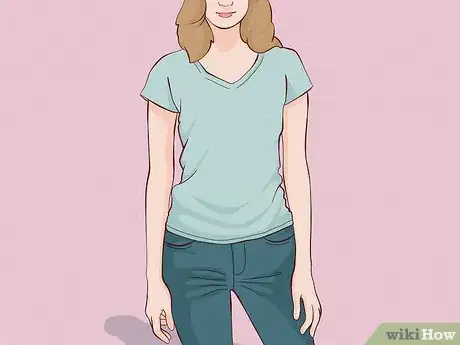

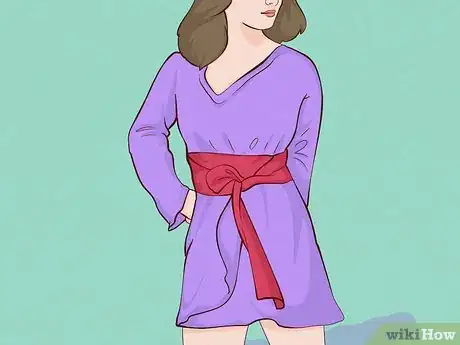



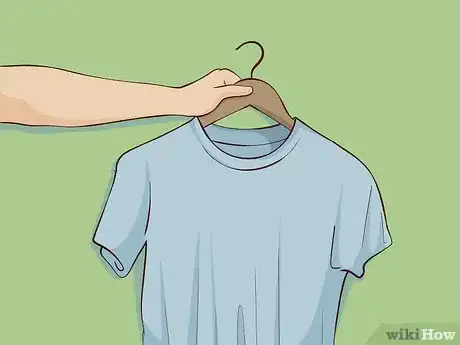


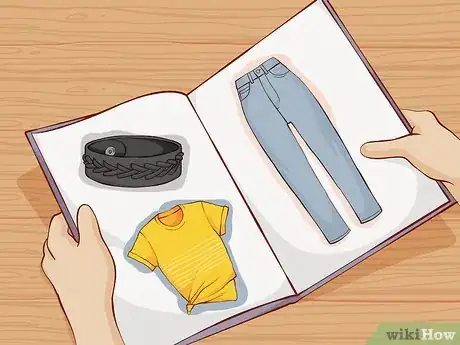





-Step-14.webp)





-Step-26-Version-2.webp)
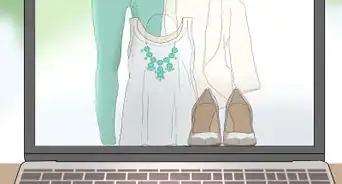

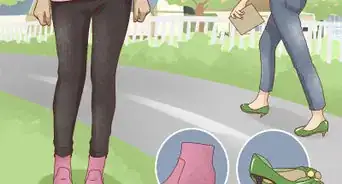














-Step-14.webp)


































